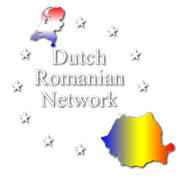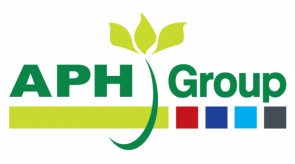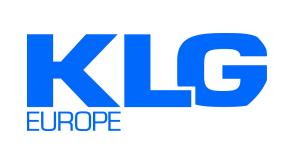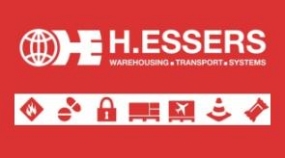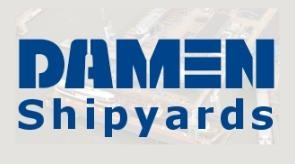Newsletter June 2025

Thijssen: Netherlands to suffer economic damage from downtime
What Ingrid says of it
The Netherlands cannot afford another period of political stagnation. So says VNO-NCW president Ingrid Thijssen recently in an interview with De Telegraaf. She is deeply concerned about the failure to find solutions to urgent problems such as nitrogen and high energy prices. “If you look back to the fall of Rutte-IV, in a moment you had a period of six years in which there was only a cabinet in place and governing for a year and a half.”
Predictable policies needed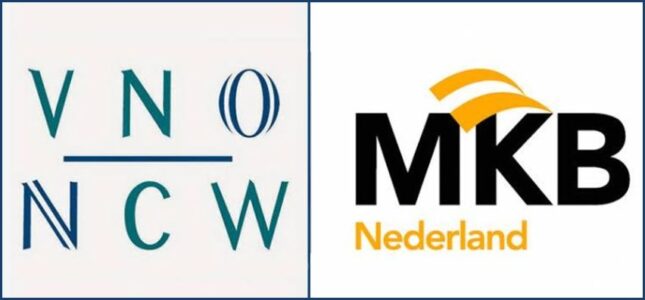
According to Thijssen, it is therefore important that a stable cabinet that pursues predictable policies and has an eye for competitiveness and the investment climate now quickly emerge. “I think we can now conclude that that extra-parliamentary experiment was not a success. It led to a much worse governability of our country.” Politicians were too often concerned with the interests of their own constituencies. “What the country needs is stable policy: followable and predictable, not that in one night or evening everything changes. The Netherlands has become unreliable and unstable in recent years.”
Addressing urgent problems quickly
In the short term, Thijssen says it is crucial that the House of Representatives take responsibility for addressing the most urgent problems. “There is a majority for a realistic nitrogen approach. This must come about quickly, otherwise investments will be postponed and companies will move away.” Furthermore, the entrepreneurial chairman mentions the accelerated scaling up of the defense industry and the importance of a solution to the high energy prices for industry. “These are much higher than in our neighboring countries, which means that Dutch companies cannot compete. We cannot address that only in a year and a half.”
And then Romania came into the picture
European markets heaved a sigh of relief after President Nicuşor Dan’s victory. Ursula von der Leyen President of the European Commission was especially delighted with these developments, as this made Romania the first European country to halt negative right-wing extremism.
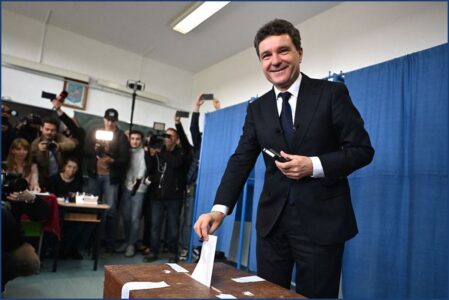 The pro-European candidate Nicuşor Dan exceeded all expectations and won the Romanian elections. As expected, the initial market reaction was positive and investor sentiment toward Romanian assets improved significantly. The leu rose more than 1.5% against the euro and is now only slightly below pre-election levels. The BET index rose more than 3.5% and the yield on 10-year government bonds fell sharply to 7.4%, completely wiping out the rise after the first round of elections. It is important to note that the risk of a country’s credit rating being downgraded decreased significantly.
The pro-European candidate Nicuşor Dan exceeded all expectations and won the Romanian elections. As expected, the initial market reaction was positive and investor sentiment toward Romanian assets improved significantly. The leu rose more than 1.5% against the euro and is now only slightly below pre-election levels. The BET index rose more than 3.5% and the yield on 10-year government bonds fell sharply to 7.4%, completely wiping out the rise after the first round of elections. It is important to note that the risk of a country’s credit rating being downgraded decreased significantly.
The newly elected president did not waste any time and managed to interest four parties in a short time to explore the possibility of a coalition. Since Romania has a very large budget deficit, that indicated the direction the four parties were headed, with the preference being for cuts in government and not in raising taxes which does not rule out more efficiency in public spending.
 The European Commission has indicated if eliminating the budget deficit within a relatively short period of time is an obstacle, it is willing to grant a postponement under certain conditions.
The European Commission has indicated if eliminating the budget deficit within a relatively short period of time is an obstacle, it is willing to grant a postponement under certain conditions.
Romania must submit a credible plan for fiscal measures to the European Commission by June 30, President.
At the same time, Bucharest then faces a critical deadline: if it fails to submit a plan for austerity and revenue increases to the European Commission by June 30, the country risks losing significant funding from the EU’s Recovery and Resilience Fund.
Nicușor Dan told union leaders at Monday’s meeting the 16th in Cotroceni that there is no time for “microsurgery,” as Romanian financiers expect concrete and immediate measures to reduce the budget deficit.
A parliamentary majority requires 165 votes. Without the PSD, which has 86 MPs, such a majority cannot be built. Whether he wants to or not, the newly elected president must convince the PSD to stay in government, or at least support a minority government from the opposition. And when it comes to tax increases, such a government is dead.
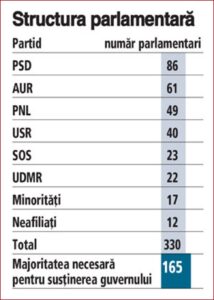 At the time of writing, preliminary talks had not been completed (including the choice of a new prime minister), so changes are reserved.
At the time of writing, preliminary talks had not been completed (including the choice of a new prime minister), so changes are reserved.
The four parties are PSD (socialists), PNL (liberals), USR(social liberals) and UDMR (Hungarian minority). The president of Romania is not only a ceremonial position and also appoints the prime minister and may return (not veto) bills for reconsideration. This as a correction to the descriptions as it was described in some of the Dutch media.
It is striking that both successive presidents have a similar profile, as both were mayor Klaus Johannis in Sibiu and Nicusor Dan in Bucharest with low party political affiliation (Klaus FDGR and PNL) and (Nicusor USR) and both(see photo) by profession teacher. It could indicate a politically stable environment. Our country could learn something from that!
The working group of the aforementioned coalition (also called Cotroceni Group after the Cotroceni Palace which is the official residence of the President of Romania) also has to deal with the IMF focusing mainly on fiscal measures to reduce the budget deficit and the business community in particular will be watching this with suspicion. As DRN, we are positive that participating parties have not indicated any roadblocks in advance because the task they face is no small one. And below is an insight into the IMF measures to get a picture.
The International Monetary Fund recommends that Romania adopt a package of fiscal measures that would shift the tax burden from taxes on labor, including social contributions, to consumption taxes and, to a lesser extent, wealth taxes. The institution estimates that these proposals, if fully implemented, could generate revenues of at least 1.2% of GDP by 2025. 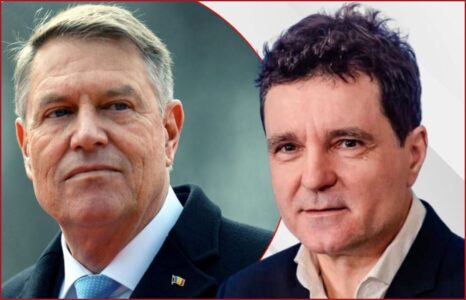
Romania’s medium-term fiscal framework foresees a gradual reduction of the budget deficit from about 8% of GDP in 2024 to 7% in 2025 and 3% (or less) in 2031.
“Given the limited scope for spending consolidation – and given the low share of spending in GDP – revenue mobilization is necessary. The IMF technical assistance proposes a package of fiscal reforms aimed at raising revenue, improving labor incentives and closing loopholes for tax planning abuses. The main recommendations focus on shifting the tax burden from taxes on labor (including social contributions) to taxes on consumption and, to a lesser extent, on capital. If fully implemented, the recommendations could generate revenues of as said at least 1.2 percent of GDP by 2025,” the IMF said in a report.
IMF’s key recommendations:
-
Labor taxes
– moving from a 10% flat tax on labor income to a two-rate tax of 15% and 25%, with the latter applying to the highest incomes. To reduce the tax burden on labor for most taxpayers, the Fund recommends significantly reducing or eliminating health care premiums.
-
Taxation of wealth and asset income
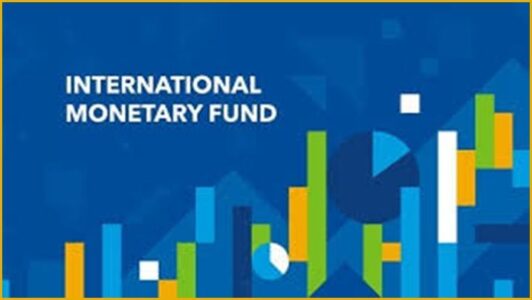 The tax on dividends paid to individuals should be increased from 8% to 10%; land and property taxes should be merged into one tax and exemptions reduced, while vulnerable individuals receive tax relief in other forms; the tax incentive for research and development should be restructured as a refundable tax credit; the turnover threshold for the micro-enterprise regime should be significantly reduced from the current €500,000, preferably by aligning it with the threshold for VAT registration (€88,500). The taxation of corporate profits can be improved by eliminating the tax deduction for corporate sponsorship and replacing the tax exemption for reinvested profits with a tax deduction of up to 50% for eligible investments, capped at 10% of the corporate tax liability.
The tax on dividends paid to individuals should be increased from 8% to 10%; land and property taxes should be merged into one tax and exemptions reduced, while vulnerable individuals receive tax relief in other forms; the tax incentive for research and development should be restructured as a refundable tax credit; the turnover threshold for the micro-enterprise regime should be significantly reduced from the current €500,000, preferably by aligning it with the threshold for VAT registration (€88,500). The taxation of corporate profits can be improved by eliminating the tax deduction for corporate sponsorship and replacing the tax exemption for reinvested profits with a tax deduction of up to 50% for eligible investments, capped at 10% of the corporate tax liability.
3 Consumption taxes
– Reduced VAT rates should be increased to the standard rate, with the possible exception of basic foodstuffs (the increase could be staggered over time to soften the impact on consumer prices); the standard rate should rise from 19% to at least 20% by 2025 and then to 21%, close to the EU27 average of 22%; excise duties should be adjusted for inflation; the excise rate for still and sparkling wines should be unified at around 60 lei/hl
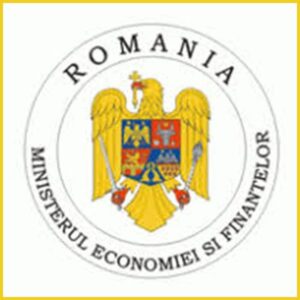 Romania has the third lowest tax-to-GDP ratio in the European Union, with ample opportunities for fiscal policy to complement the tax administration’s ongoing digital transformation to generate additional revenue. The IMF technical assistance, requested by the finance minister, proposes a package of fiscal reforms aimed at raising revenues while improving incentives for work, remaining attractive for capital investment and closing loopholes for tax planning abuses. Instead of making the minimal fiscal adjustments needed to save the EU funding package, the deficit burden can be seen as an opportunity for Romania to make significant structural improvements in the fiscal sphere, particularly by shifting the tax burden from mandatory social security contributions to more consumption and income taxes,” the report said.
Romania has the third lowest tax-to-GDP ratio in the European Union, with ample opportunities for fiscal policy to complement the tax administration’s ongoing digital transformation to generate additional revenue. The IMF technical assistance, requested by the finance minister, proposes a package of fiscal reforms aimed at raising revenues while improving incentives for work, remaining attractive for capital investment and closing loopholes for tax planning abuses. Instead of making the minimal fiscal adjustments needed to save the EU funding package, the deficit burden can be seen as an opportunity for Romania to make significant structural improvements in the fiscal sphere, particularly by shifting the tax burden from mandatory social security contributions to more consumption and income taxes,” the report said.
Regulation 156/2024 has already increased the dividend tax from 8% to 10% from the beginning of 2025 and lowered the ceiling for taxing micro-enterprises by 3% of profits to 250,000 euros.
Agricultural sector
“Gentle giant”
DN Agrar unveils strategy for 2025-2030
DN AGRAR Group, Romania’s largest integrated livestock producer and leading producer of cow’s milk, has just announced its development strategy for 2025-2030. The core of this plan is a significant investment in the expansion of milk production capacity, with the goal of reaching an annual production of 150 million liters by 2030 on six high-efficiency farms, doubling the projected milk production for 2025.
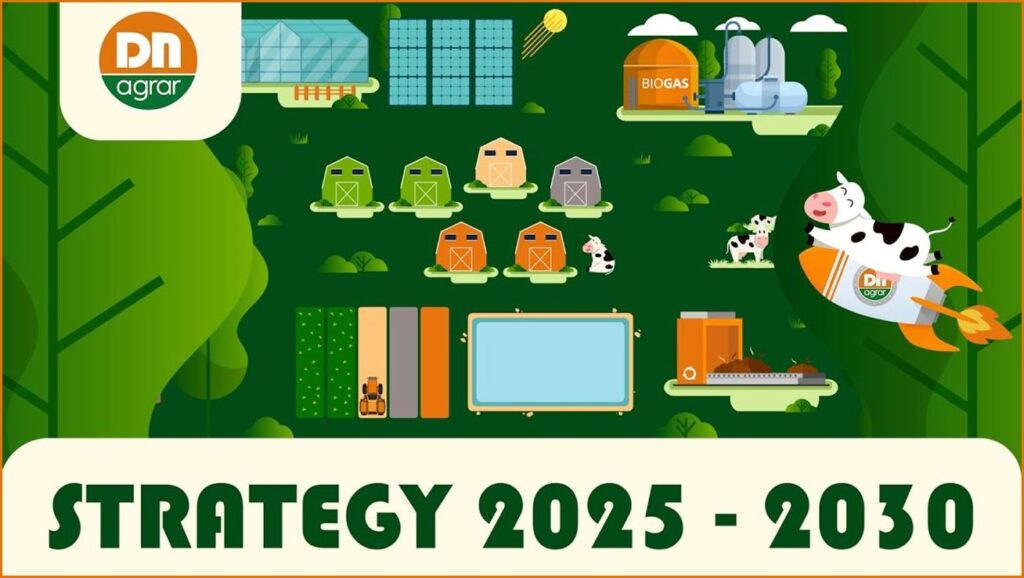
A new paradigm in sustainable agriculture
 In late May 2025, Jan de Boer, chairman of DN AGRAR Group’s board of directors, said, “We are not just expanding businesses, we are developing a new paradigm in sustainable agriculture. Our goal is to become a regional leader in high-quality dairy and food production by developing industrial clusters that combine dairy farming, vegetable farming, biogas and composting plants, vertical wheatgrass farms and greenhouse farming. With five major projects starting in 2026 and a biogas plant coming on stream in 2027, we are positioned to double EBITDA by 2030. This strategy will be implemented by a newly assembled management team, carefully selected and prepared under my leadership, to lead DN AGRAR into the next phase of operations.” With a strong focus on innovation, operational excellence and sustainable impact, the new leadership is fully empowered to deliver on our ambitious vision. Moreover, additional initiatives we are analyzing, including targeted mergers and acquisitions, put us on track to exceed projections.
In late May 2025, Jan de Boer, chairman of DN AGRAR Group’s board of directors, said, “We are not just expanding businesses, we are developing a new paradigm in sustainable agriculture. Our goal is to become a regional leader in high-quality dairy and food production by developing industrial clusters that combine dairy farming, vegetable farming, biogas and composting plants, vertical wheatgrass farms and greenhouse farming. With five major projects starting in 2026 and a biogas plant coming on stream in 2027, we are positioned to double EBITDA by 2030. This strategy will be implemented by a newly assembled management team, carefully selected and prepared under my leadership, to lead DN AGRAR into the next phase of operations.” With a strong focus on innovation, operational excellence and sustainable impact, the new leadership is fully empowered to deliver on our ambitious vision. Moreover, additional initiatives we are analyzing, including targeted mergers and acquisitions, put us on track to exceed projections.
This growth trajectory supports our upcoming transition to the main market of the Bucharest Stock Exchange, which is designed to increase liquidity, broaden our investor base and drive long-term value creation for shareholders.
” See interview below with Peter de Boer, currently CEO.
The key strategic projects for 2025-2030 are: Cut 2 Farm – A new cattle farm with 5,000 head of cattle and an expected daily milk production of 150,000 liters. It includes a vertical farm producing 25% of the cattle feed on site. Construction is expected to start in 2026 and the full operational phase is planned for 2029.
Composting facilities – Five composting units are being developed in addition to the existing facilities, with an expected annual production of more than 40,000 tons of organic fertilizer by the end of 2030.
Biomethane plant – Developed in cooperation with Black Sea Oil & Gas, the project is expected to generate annual revenue of 3.5 to 4 million euros from 2027 and contribute to a 90% reduction in CO2 emissions.
Ter rural wheatgrass farms – Four vertical systems will produce more than 100 tons of wheatgrass per day, potentially offsetting 25% of current feed inputs, improving cost efficiency and sustainability. And that’s not all. There are other projects in advanced stages of analysis, with investment decisions expected in 2027.
Straja 2 Farm – Designed for 5,000 dairy cows and a daily production of 150,000 liters of milk. It includes an advanced research and development center and vertical agricultural technologies, with a potential start of operations in 2030.
Greenhouse Grocery – A strategic initiative to expand DN AGRAR’s sales mix beyond dairy products and respond to growing demand for traceable, high-quality products.
Portfolio diversification – Through research initiatives in collaboration with academic institutions, we focus on maximizing commodity value. This includes strategies such as selling extracted fat and protein from milk, producing milk powder or drying milk to reduce transportation costs and increase margins. Financing for the projects is secured through a combination of bank loans, EU financing programs, capital raisings and internal capital.
New executive team DN AGRAR has just approved a new executive team structure consisting of: Peter de Boer, Chief Executive Officer (CEO); Adina Trufaș, Chief Operating Officer (COO) and Deputy CEO; Mihaela Nicula, Chief Financial Officer (CFO). The current CEO, Jan Gijsbertus de Boer, will assume the role of strategic advisor to the CEO and stay on as chairman of the board, ensuring continuity in strategic leadership. The new executive team was appointed effective June 1, 2025. DN Agrar’s ambitious plans in Romania show not only how far a company with a good vision and strategy can go, but also how enormous the opportunities in Romania are for the agrifood sector.
Want to know more about the opportunities in Romania? Then stay tuned for our news about the upcoming Dutch agri-mission to Romania (scheduled for the last week of October 2025).
Strengthening aquaculture sector
State aid of 2 million lei for the purchase of diesel for use in aquaculture. How much will producers receive per liter?
According to a government decision, economic operators in the aquaculture sector will receive between 1,746 lei and 2,213 lei per liter of diesel used for sector-specific activities in 2024 and 2025.
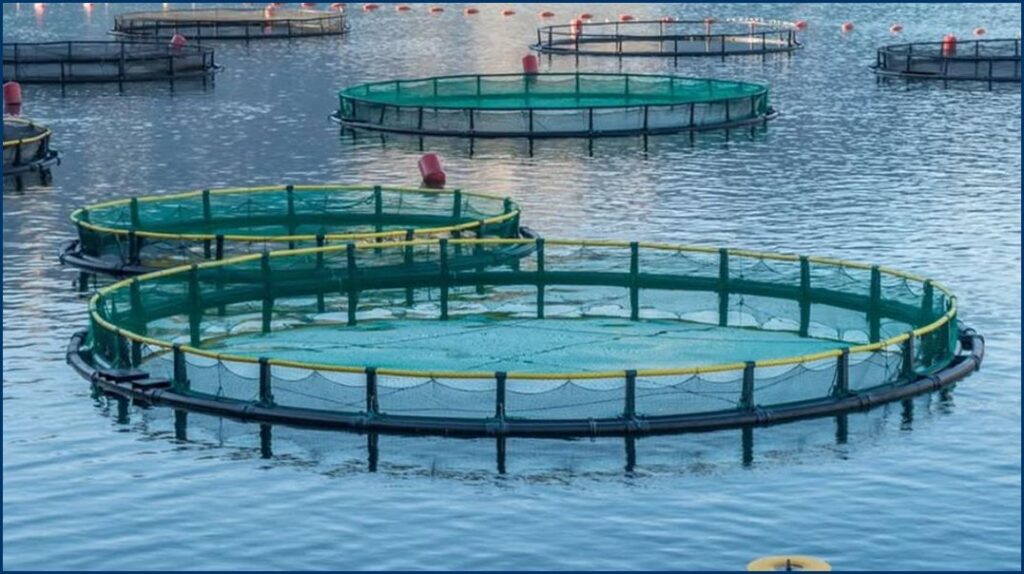
At today’s meeting, the Romanian government adopted a decision establishing a state aid scheme to reduce excise taxes on diesel used in aquaculture. For 2024, the amount for the payment of state aid is estimated at 500,000 lei , and for 2025 an allocation of 1,500,000 lei is planned in the budget of the Ministry of Agriculture and Rural Development.
According to the regulations, the unit amount of state aid is set as follows:
– for the year 2024:
– January 1 – June 30: 1,746 lei/liter
– July 1 – December 31: 2,079 lei/liter
– for the year 2025: 2,213 lei/liter
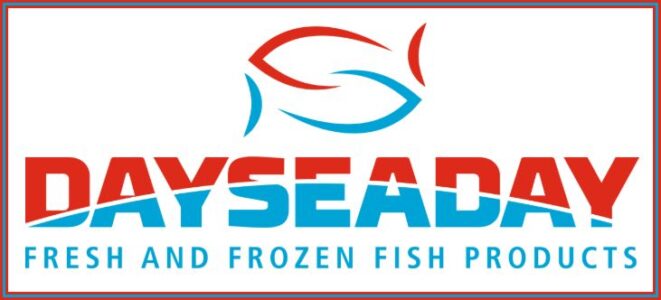 This scheme aims to reduce production costs for aquaculture operators, strengthen the economic viability of the sector and promote continuity of operations in fishing facilities. The application of the measure also helps to offset the negative effects of rising prices for energy resources and to maintain the competitiveness of operators at the national and European level.
This scheme aims to reduce production costs for aquaculture operators, strengthen the economic viability of the sector and promote continuity of operations in fishing facilities. The application of the measure also helps to offset the negative effects of rising prices for energy resources and to maintain the competitiveness of operators at the national and European level.
The message from some of Europe’s most powerful bankers
The message from some of Europe’s most powerful bankers, with expertise in agriculture and the food industry:
Eastern Europe will be the future of pig and poultry production, given the constraints in Western Europe, from countries like Germany, Belgium and the Netherlands. Romania is exactly the country in which we need to invest
Kiran Sanchit, head of Food and Agri for EMEA at ING:
We finance the poultry sector and we love this business. However, from a risk management perspective, not all players in this sector are easy partners.
 As global demand for food continues to rise, populations grow and consumers become increasingly price-conscious and environmental regulations become more stringent, investors are turning their attention to markets with low production costs. Eastern Europe will develop into a strategic region for the food industry, and Romania has all the assets to play a leading role in meat production. So say two of Europe’s most powerful bankers, specializing in agriculture and the food industry, in an interview with Ziarul Financiar.
As global demand for food continues to rise, populations grow and consumers become increasingly price-conscious and environmental regulations become more stringent, investors are turning their attention to markets with low production costs. Eastern Europe will develop into a strategic region for the food industry, and Romania has all the assets to play a leading role in meat production. So say two of Europe’s most powerful bankers, specializing in agriculture and the food industry, in an interview with Ziarul Financiar.
“The reason why Romania is exactly the country we should invest in from a sustainability perspective is related to the increasingly intense debate in Western Europe about the possibility of producing pork in countries like Germany, Belgium or the Netherlands. The answer is clear: It is no longer possible. There is insufficient space and restrictions are increasing. In this context, more and more CEOs of companies in the sector have already said that Eastern Europe represents the future of pig and poultry farming,” said Kiran Sanchit, head of food and agri for EMEA at ING, an originally Dutch bank. He mainly analyzes companies in the food industry with sales over 100 million euros.
Victoria Zinchuk, director for Romania at the European Bank for Reconstruction and Development (EBRD):
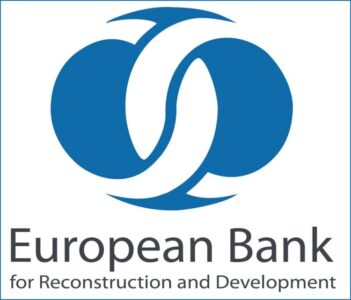 EBRD invested 707 million. euros in Romania by 2024 in a record 44 projects. Victoria Zinchuk, bank director: Half of the investments are in renewable energy and energy distribution networks. For 2025, we have a strong portfolio, covering all sectors of the economy
EBRD invested 707 million. euros in Romania by 2024 in a record 44 projects. Victoria Zinchuk, bank director: Half of the investments are in renewable energy and energy distribution networks. For 2025, we have a strong portfolio, covering all sectors of the economy
We are open to financing solid companies in Romania, we have no limit on the amount we can finance, as long as the business plan fits our country strategy and the needs of Romania.
♦ By comparison, investments in 2023 amounted to 658 million. euros in 23 projects
♦ By 2023, almost half of EBRD investments were directed to financial institutions in Romania
♦ The private sector share of investment was 83%, well above the 76% share of investment earmarked for the private sector in all EBRD regions.
The European Bank for Reconstruction and Development (EBRD) invested in a record number of projects in Romania in 2024, amid increased investments in the energy sector and commitments to join green energy sources. According to the EBRD, the 2025 portfolio is strong and covers all sectors of the economy.
Victoria Zinchuk, director of the EBRD in Romania, said in an interview with ZF that the largest institutional investor in Romania is open to financing solid companies in the country and that there is no limit to the amount of money released for this purpose, as long as the business plan is in line with the country’s strategy and Romania’s needs.
“The EBRD is demand-driven – we deliver in line with our mandate and based on national needs.
Because there is a strong interest in renewable energy sources in Romania, we have been working with the Romanian Ministry of Energy since 2020 to improve legislation and facilitate investment,” said Victoria Zinchuk In comparison, in 2023 the EBRD invested 658 million in Romania. euros in 23 projects. In 2024, much emphasis was placed on supporting the ecological transition.
Investments in 2024 include the guarantee of half of the €40 million. loan provided to corn starch producer Omnia by Banca Transilvania and another €10 million. for Profi. The EBRD also invested €10 million in equity for the expansion of the La Cocoş retail chain and took a minority stake in technology company Arobs Transilvania to support its regional growth strategy.
History of Romanian wine
Romania has one of the oldest viticultural traditions in the world and viticulture dates back more than 6,000 years.Thanks to the suitable climate, relief and soil, viticulture became a common activity of the local population, especially in the hilly areas. Numerous local grape varieties were obtained by empirical selection in the Middle Ages and became representative of Romanian wine regions. Until the phylloxera crisis, each Romanian wine region had its own assortment of wine grapes, which produced specific local wines. Since the Middle Ages, wine has been the traditional alcoholic beverage of the Romanians.
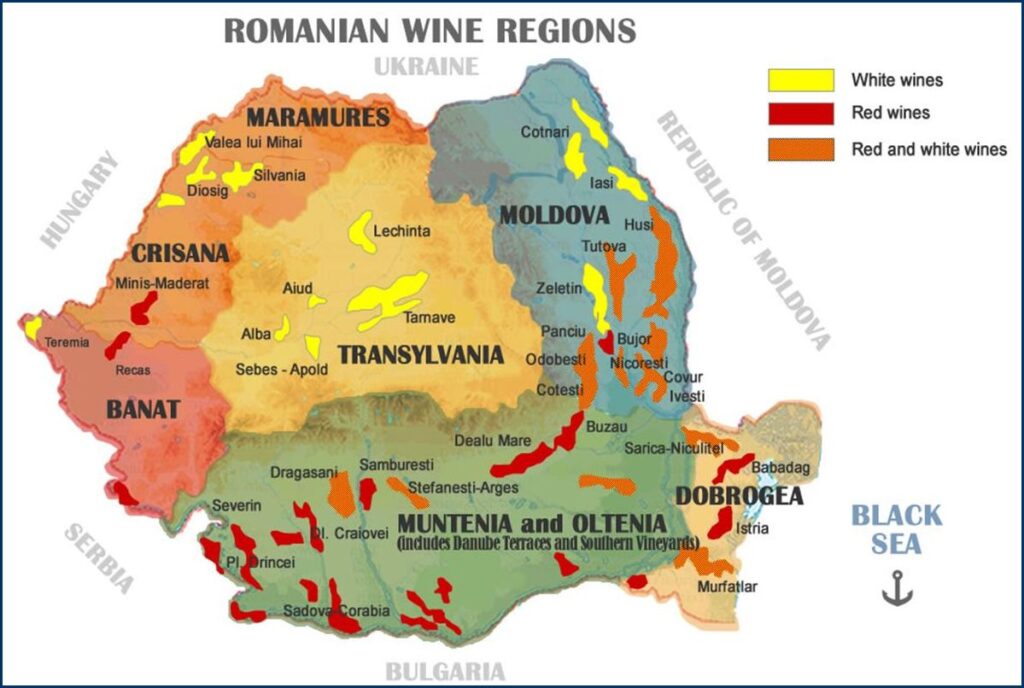
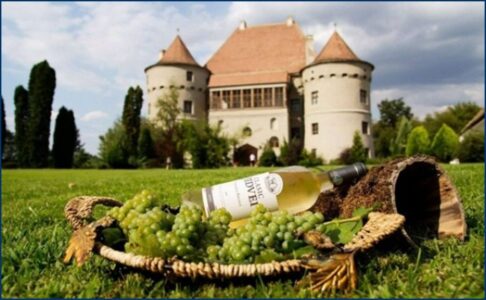
In photo:Wine estate Jidvei(alba)
In the 1880s, phylloxera (a pale yellow sap-sucking insect that attacks the roots of vines) was accidentally introduced to Romania as well
(1872,Chitorani , wine-growing area Dealul Mare ), and over the course of several years destroyed local viticulture.
The recovery of Romanian viticulture lasted until the early 20th century and was mainly done by planting French wine grape varieties such as Merlot , Chardonnay , Pinot noir , Sauvignon , Cabernet Sauvignon etc.
Phylloxera-resistant grape hybrids were also planted. Several traditional Romanian wine grapes survived the phylloxera crisis and are still grown in Romania in the 21st century.
Romania has about 187,000 hectares of vineyards, ranking sixth among European wine-producing countries. With a wine production of about 4.5 million hl/year, Romania is the thirteenth largest wine-producing country in the world.
This excellent wine guide can be found at https://www.anne-wies.nl
Anne-wies@wijnspijs.com
Economical developments
Business associations are concerned
Business organizations are concerned that the debate on economic recovery focusing on tax increases.
As part of the debates on economic recovery measures and addressing the budget deficit, eleven(+DRN) business associations and organizations, including AHK, AmCham, AOAR, Concordia and FIC, are asking the parties to also listen to the voice of the business community. Including the Dutch Romanian Network (DRN)wishing the important “Cotroceni Group” much wisdom and success.
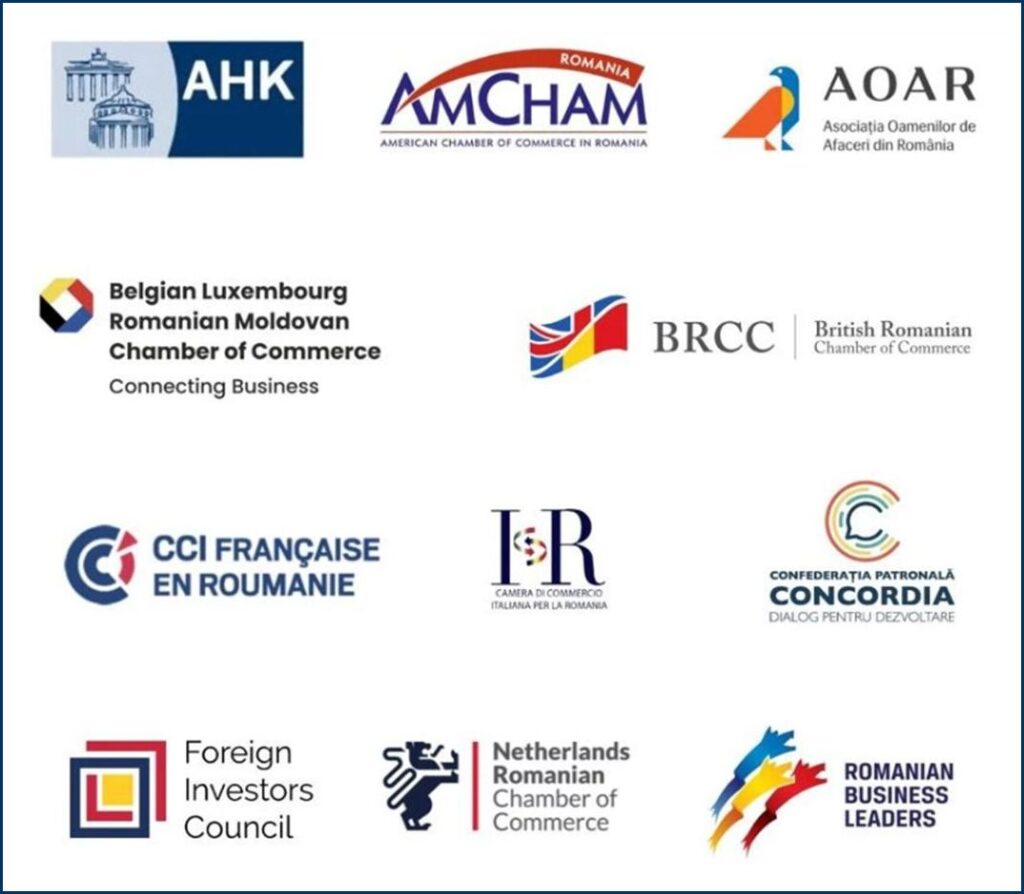
In the context of the current debates on economic recovery measures and addressing the budget deficit, business organizations are calling on the group chairs of the parties participating in the ongoing consultations, asking them to also listen to the business community.
“We are aware that the decisions and measures in this period will have a profound and lasting impact on the population, on companies, on the economy, on investor confidence and on Romania’s international positioning. It is precisely for this reason that we need a real dialogue so that the measures taken are aimed both at correcting imbalances and at protecting the economic capacity to perform in the medium and long term,” said the organizations signing the document.
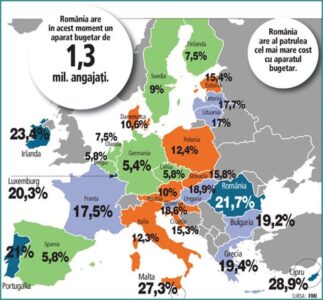
“We also ask political parties to listen to the voice of business, which has supported and continues to support the economy. We are concerned that the current debate seems to focus predominantly on tax increases, while there is no public vision to reduce excessive public spending or modernize the state apparatus. Without a real commitment to internal reform, fiscal measures risk only taxing the economic engine needed for recovery,” said the call by the 11 organizations.
Businessmen recognize that the risks of blocking European funds and lowering the country’s rating, which is disastrous for Romania’s future, require a comprehensive and responsible response from the government, with a combination of measures aimed at both reducing spending and increasing revenues. They believe that the future package of measures should include policies to stimulate investment and economic activity.
In this context, the organizations signing the document consider it necessary for any package of measures to be based on: to preserve Romania’s main competitive advantages, such as the flat rate, and to avoid discouraging investment, but also to allow us to develop in the long term.
- maintaining the uniform and fair tax rate, with the elimination of all exceptions, a simple and efficient mechanism for both taxpayers and authorities – essential for supporting economic growth, reducing distortions and combating tax evasion;
- reducing nonessential government spending, including excessive administrative costs, redundant agencies and discretionary political spending;
- sweeping reforms in public sector management, prioritizing performance, efficiency, real reduction of bureaucratic burdens and transparency;
- eliminating wasteful budget allocations, such as unjustified grants and excessive funding of election campaigns from public funds;
Protecting and prioritizing essential public investments in infrastructure, education and innovation – foundations of long-term growth;
- ensuring tax fairness by abolishing exemptions, sales taxes and the tax on special constructions;
- efficient tax collection by reducing the VAT gap and prioritizing efforts to combat large-scale tax evasion;
- accelerating digitization, administrative simplification and reducing bureaucracy;
- maximizing the absorption of European funds by simplifying procedures and removing bureaucratic bottlenecks.
The state must set the first example. A credible response to this fiscal challenge begins with a clear message that the government is willing to optimize the use of public money and reform itself.
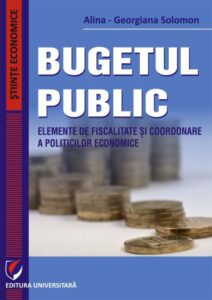 Improving collection and voluntary compliance – through smart enforcement, digitization and addressing systematic tax evasion, as well as increasing the transparency and predictability of tax policy and the spending of public money – is an essential part of the solution. However, this should not be confused with introducing new taxes or increasing existing ones, or unfairly punishing the same honest taxpayers by the relevant authorities.
Improving collection and voluntary compliance – through smart enforcement, digitization and addressing systematic tax evasion, as well as increasing the transparency and predictability of tax policy and the spending of public money – is an essential part of the solution. However, this should not be confused with introducing new taxes or increasing existing ones, or unfairly punishing the same honest taxpayers by the relevant authorities.
The private sector is already under considerable pressure, caused by unpredictability and administrative burdens. The current discussions, leaked to the public, in the absence of impact analyses in which the business community would also participate, further reinforce the degree of instability and economic gridlock, especially since the state is not fulfilling its own obligations to repay what is owed to a large proportion of honest and well-paying taxpayers in the private sector. Solidarity cannot function without a minimum of reciprocity, nor in a fiscal context that permanently creates inequality and privileged categories. Honest businesses should not have to pay to cover the deficit caused by the irresponsible management of public finances. Efficient and responsible economic activity, as well as high-performing and adequately paid labor, should not be discouraged by tax mechanisms that impede growth.
The European Commission’s Spring 2025 package highlights Romania’s excessive spending growth and fiscal slowdown. Ignoring these signals will only increase the imbalance. What is needed now is not another fiscal round, but a responsible medium-term fiscal plan anchored in spending reforms, institutional efficiency and economic predictability.
As always, even this time, the private sector understands the gravity of the situation and the urgency and is willing to be part of the solution. We need transparency and dialogue, and perceived solidarity with the private sector must be demonstrated at all levels of government – not by implicitly passing on the sacrifices to the private sector, but by actual ownership of the reforms and discipline in the management of public finances.
The call was signed by the Romanian-German Chamber of Commerce and Industry – AHK, the American Chamber of Commerce in Romania – AMCHAM ROMANIA, the Romanian Entrepreneurs Association – AOAR, the Belgian-Luxembourg – Romanian-Moldovan Chamber of Commerce – BEROCC, the British-Romanian Chamber of Commerce – BRCC, the French Chamber of Commerce, Industry and Agriculture in Romania – CCIFER, the Italian Chamber of Commerce in Romania – CCIPR, the Dutch Chamber of Commerce in Romania – NRCC, the CONCORDIA Employers Association, the Council for Foreign Investors – FIC and the Romanian Foundation for Business Leaders – RBL.
Shipbuilding Sector
Shipyard Damen Galati Romania launched a ferry boat
Shipyard Damen Galati Romania has launched a ferry equipped for electric propulsion.
Canadian company BC Ferries has purchased this ferry. It is the first in an order of four vessels.
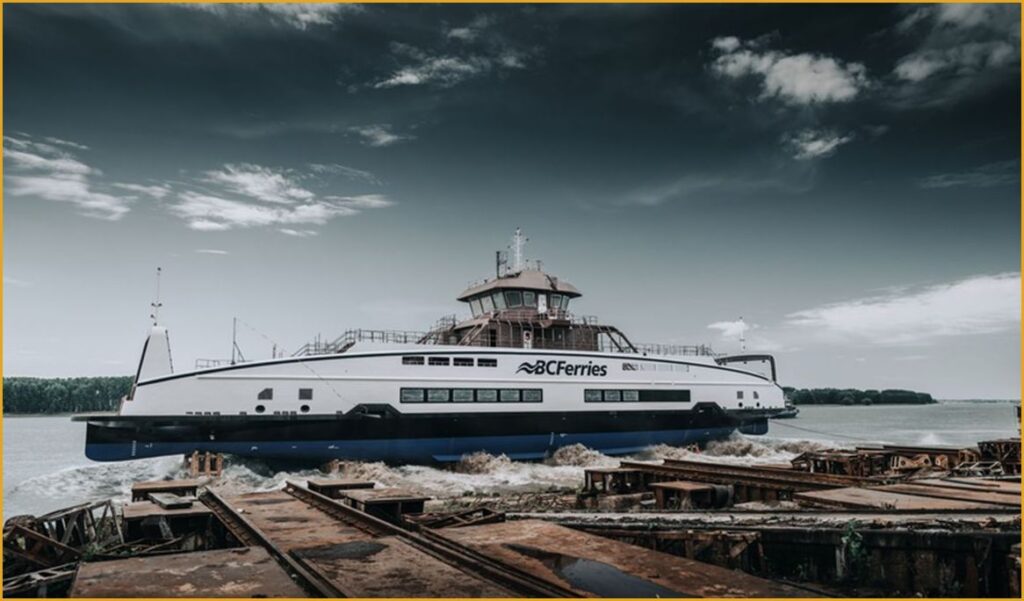
The Damen Galati shipyard, managed by the Dutch at Damen, has launched the latest Island-class ferry for Canadian company BC Ferries. This ferry is fully equipped for electric propulsion and is the first in an order of a total of four vessels.
The ship is the seventh Damen vessel to be added to the Canadian company’s fleet.
The ferries, with a capacity of 47 vehicles and 390 passengers, can run exclusively on electricity once charging infrastructure is available at the terminals. The vessels connect four communities on the Canadian coast of British Columbia and operate on routes between Nanaimo and Gabriola Island, and between Campbell River and Quadra Island.
“In addition to the launch of the seventh ship on May 23, the yard also laid the keel for the ninth Island-class ship and cut the sheet metal for the tenth. It’s great to see our projects progressing in this way, with so many important milestones happening at the same time. We look forward to continuing work on these sustainable ferries in the coming months,” said Leo Postma, Executive Director Global Sales at Damen.
The Canadian Ambassador to Romania, His Excellency Gavin Buchan, also attended the event.
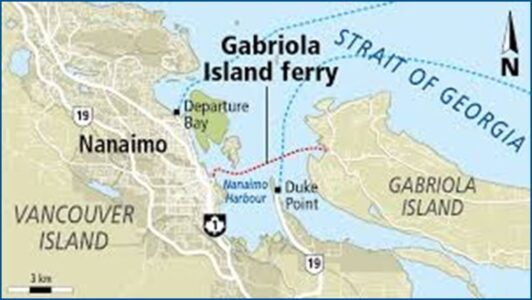 “The Island Class is now the largest ship model in our fleet and is a critical part of our efforts to renew and modernize our entire fleet and meet the needs of the people of British Columbia who rely on BC Ferries every day,” said Ed Hooper, Executive Director of Shipbuilding for BC Ferries.
“The Island Class is now the largest ship model in our fleet and is a critical part of our efforts to renew and modernize our entire fleet and meet the needs of the people of British Columbia who rely on BC Ferries every day,” said Ed Hooper, Executive Director of Shipbuilding for BC Ferries.
In addition to the vessels themselves, Damen will also supply ground loading equipment to BC Ferries. After delivery in 2027, Damen will continue to provide support for the ferries through its service center in Victoria, Canada.
The Dutch Damen Group operates 35 shipyards and 20 other companies in 20 countries, supported by a global sales and service network.
Damen delivers two RSD tugs 2513 to Tripmare for enhanced port operations June 3, 2025 Damen Shipyards Group has delivered two RSD tugs 2513 to Italy’s Tripmare. Tripmare will deploy the vessels to meet the demands of increasing shipping traffic in 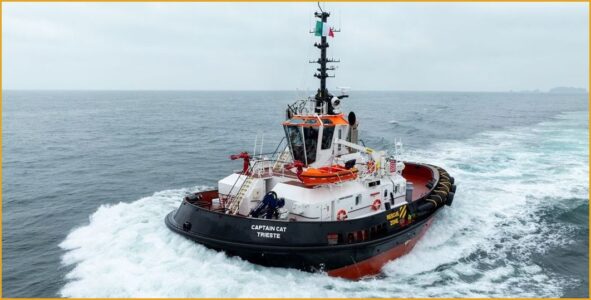 the Adriatic port of Trieste. Damen has tailored the proven standard design of its RSD tug 2513 to its customer, including FiFi1 notation, oil recovery capabilities and a third generator. The vessels are also prepared for IMO Tier III compliance with the internally developed Damen Marine NOX reduction system. Tripmare has approached Damen to expand its capabilities in line with the growing size of ships calling at the port. This includes MSC’s ultra-large container ship Nicola Mastro (24,000 liters). The new tugs will replace an existing tractor tug and an ASD tug in the Tripmare fleet. Alberto Cattaruzza, CEO of Tripmare, said, “We are proud to introduce this modern, powerful and compact design that puts sustainability first. We look forward to welcoming these innovative tugs to Trieste.” The tugs are named Captain Cat and Med Rigel. The former is named after Tripmare founder Captain Luigi Cattaruzza. The tugs will depart from Damen Song Cam Shipyard in week 23 and are expected to arrive in Italy in August. “We are very proud to welcome Tripmare aboard the Damen voyage,” said Antonio Marte of Damen Shipyard. “These two RSD tugs symbolize a new era of synergy, allowing Tripmare to streamline its fleet operations without compromising on towing configuration preferences between ASD and tractor tugs.” The RSD Tug 2513 combines elements of both tractor and ASD tugs in one vessel, allowing for an “always bow-first” operation. The vessel offers exceptional maneuverability, the result of in-depth, in-house engineering and extensive model testing. A major contributor to this aspect of the RSD Tug 2513’s performance is Damen’s patented Twin Fin skeg, which provides excellent course keeping and stability during operations. The RSD Tug 2513 was the first vessel in Damen’s Compact Tugs series. It features a number of features that improve performance in terms of safety, durability, reliability and efficiency. These include Damen Safety Glass, an unbreakable glazing that protects the operator in the event of a breaking tow line. Views of operations and clear decks are unobstructed from the compact wheelhouse. The superstructure is spring-loaded to the hull, minimizing noise and vibration. The RSD Tug 2513 was designed with ease of maintenance in mind, with the aim of reducing operational costs over its lifetime. One aspect of this is the vessel’s hybrid cooling system – a combination of box and keel cooling. In the development of the RSD Tugs 2513, sustainability was paramount for Damen. This included hull optimization using computational fluid dynamics (CFD) for reduced fuel consumption and the vessel’s ability to comply with IMO Tier III – the result of the modular Damen Marine NOX Reduction System. In addition, the vessel is equipped with Triton, Damen’s award-winning IoT solution, which enables real-time performance tracking, contributing to higher efficiency and lower emissions.
the Adriatic port of Trieste. Damen has tailored the proven standard design of its RSD tug 2513 to its customer, including FiFi1 notation, oil recovery capabilities and a third generator. The vessels are also prepared for IMO Tier III compliance with the internally developed Damen Marine NOX reduction system. Tripmare has approached Damen to expand its capabilities in line with the growing size of ships calling at the port. This includes MSC’s ultra-large container ship Nicola Mastro (24,000 liters). The new tugs will replace an existing tractor tug and an ASD tug in the Tripmare fleet. Alberto Cattaruzza, CEO of Tripmare, said, “We are proud to introduce this modern, powerful and compact design that puts sustainability first. We look forward to welcoming these innovative tugs to Trieste.” The tugs are named Captain Cat and Med Rigel. The former is named after Tripmare founder Captain Luigi Cattaruzza. The tugs will depart from Damen Song Cam Shipyard in week 23 and are expected to arrive in Italy in August. “We are very proud to welcome Tripmare aboard the Damen voyage,” said Antonio Marte of Damen Shipyard. “These two RSD tugs symbolize a new era of synergy, allowing Tripmare to streamline its fleet operations without compromising on towing configuration preferences between ASD and tractor tugs.” The RSD Tug 2513 combines elements of both tractor and ASD tugs in one vessel, allowing for an “always bow-first” operation. The vessel offers exceptional maneuverability, the result of in-depth, in-house engineering and extensive model testing. A major contributor to this aspect of the RSD Tug 2513’s performance is Damen’s patented Twin Fin skeg, which provides excellent course keeping and stability during operations. The RSD Tug 2513 was the first vessel in Damen’s Compact Tugs series. It features a number of features that improve performance in terms of safety, durability, reliability and efficiency. These include Damen Safety Glass, an unbreakable glazing that protects the operator in the event of a breaking tow line. Views of operations and clear decks are unobstructed from the compact wheelhouse. The superstructure is spring-loaded to the hull, minimizing noise and vibration. The RSD Tug 2513 was designed with ease of maintenance in mind, with the aim of reducing operational costs over its lifetime. One aspect of this is the vessel’s hybrid cooling system – a combination of box and keel cooling. In the development of the RSD Tugs 2513, sustainability was paramount for Damen. This included hull optimization using computational fluid dynamics (CFD) for reduced fuel consumption and the vessel’s ability to comply with IMO Tier III – the result of the modular Damen Marine NOX Reduction System. In addition, the vessel is equipped with Triton, Damen’s award-winning IoT solution, which enables real-time performance tracking, contributing to higher efficiency and lower emissions.
DRN Newsletter editors congratulate Kommer Damen
 At the closing dinner of the TUGTECHNOLOGY 2025 conference in Antwerp, Damen Shipyards Group President Kommer Damen received the Lifetime Achievement Award from the International Tug & Salvage Awards. The award recognizes individuals whose contributions have had a lasting and significant impact on the global towing industry
At the closing dinner of the TUGTECHNOLOGY 2025 conference in Antwerp, Damen Shipyards Group President Kommer Damen received the Lifetime Achievement Award from the International Tug & Salvage Awards. The award recognizes individuals whose contributions have had a lasting and significant impact on the global towing industry
Two Damen Combi Freighters 3850 launched for Fast Lines Belgium June 8, 2025
On Friday, May 30, the second of three Damen Combi Freighters (CF) 3850 was launched in China for Fast Lines Belgium. This follows the launch of the first vessel on May 19. The two companies signed a contract for two vessels in October 2023. Last year, Fast opted for a third ship. The CF vessels are the first newbuildings to be added to the Fast fleet. The family-owned total logistics company is headquartered in Belgium and has offices in the United Kingdom, Ireland and Poland. Fast approached Damen to build its new vessels for several reasons. Broad interpretation of sustainability Like Damen, Fast Lines Belgium focuses on 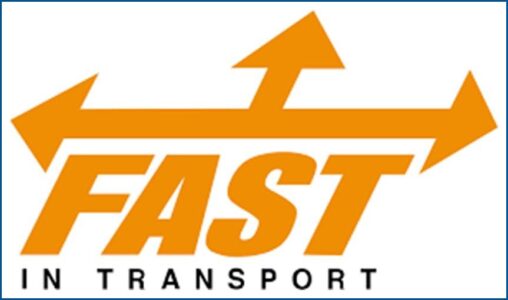 sustainability, interpreting the word broadly to include safety and crew welfare. Damen designed the CF 3850 for optimal fuel efficiency and comfortable accommodation. Moreover, the design can be easily adapted to the customer’s specific requirements. For Fast, this includes the installation of a port generator and a shore power connection larger than standard. As is common in the shortsea sector, Fast’s vessels spend significant amounts of time in port. This allows the CF 3850 vessels to be connected to electricity in ports once the infrastructure is more widely available, reducing noise and emissions in port. Crew, cranes and connectivity The company has also chosen to increase crane capacity to reduce crew manual operations. Fast also changed the layout of the vessels to ensure that more storage areas can be accessed per crane. Another benefit for Fast was Damen Triton. With the IoT solution, thousands of sensors around the ship collect data, which supports decision-making and leads to increased efficiency. A ship for the future Catrien Scheers, president of Fast Lines Belgium, reflected on the decision to engage Damen for the project, “The Damen ship stands out in the market. It is both fuel efficient and smart. With the Triton system on board, we can show our customers real-time fuel efficiency.
sustainability, interpreting the word broadly to include safety and crew welfare. Damen designed the CF 3850 for optimal fuel efficiency and comfortable accommodation. Moreover, the design can be easily adapted to the customer’s specific requirements. For Fast, this includes the installation of a port generator and a shore power connection larger than standard. As is common in the shortsea sector, Fast’s vessels spend significant amounts of time in port. This allows the CF 3850 vessels to be connected to electricity in ports once the infrastructure is more widely available, reducing noise and emissions in port. Crew, cranes and connectivity The company has also chosen to increase crane capacity to reduce crew manual operations. Fast also changed the layout of the vessels to ensure that more storage areas can be accessed per crane. Another benefit for Fast was Damen Triton. With the IoT solution, thousands of sensors around the ship collect data, which supports decision-making and leads to increased efficiency. A ship for the future Catrien Scheers, president of Fast Lines Belgium, reflected on the decision to engage Damen for the project, “The Damen ship stands out in the market. It is both fuel efficient and smart. With the Triton system on board, we can show our customers real-time fuel efficiency.

Damen Compact Crafts (DCCr), part of the Damen Shipyards Group, has announced a new collaboration with technology innovator CEADto develop a 3D printed workboat. The initiative focuses on exploring the use of large-scale 3D printing in modern shipbuilding.
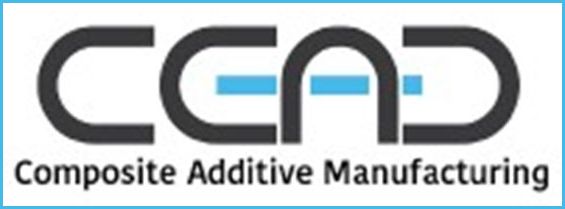 The development is taking place at the Maritime Application Center (MAC) in Delft, which is managed by CEAD.Damen wants to explore how additive manufacturing can accelerate ship production while improving sustainability and adaptability in the design and construction process.The workboat’s hull will be made using 3D printing techniques, which allows for more flexibility in design and the possibility of incorporating recycled or biobased materials into construction.
The development is taking place at the Maritime Application Center (MAC) in Delft, which is managed by CEAD.Damen wants to explore how additive manufacturing can accelerate ship production while improving sustainability and adaptability in the design and construction process.The workboat’s hull will be made using 3D printing techniques, which allows for more flexibility in design and the possibility of incorporating recycled or biobased materials into construction.
“Innovation and standardization are in our DNA at Damen. 3D printing enables us to respond faster and more flexibly to what our customers really need. It’s an exciting step toward smart, sustainable solutions that work,” said Nick Pruissen, general manager of Damen Compact Crafts.
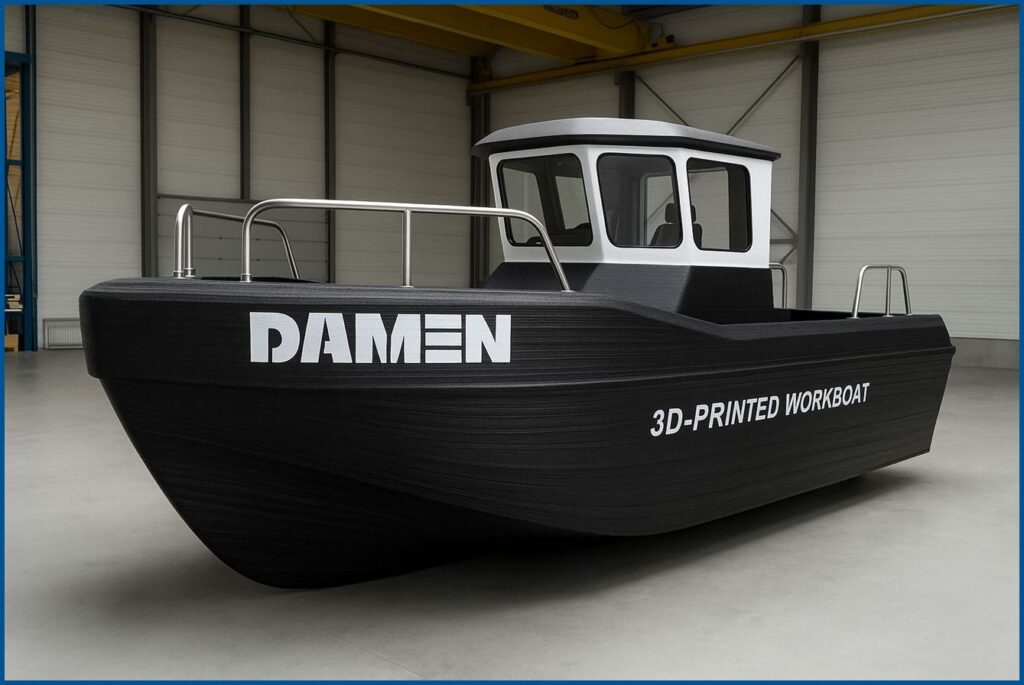
According to a company statement, “the success of the 3D printed HWB could open the door to broader applications of additive manufacturing in shipbuilding.”
DRN recognizes commercial importance of tourism in Romania
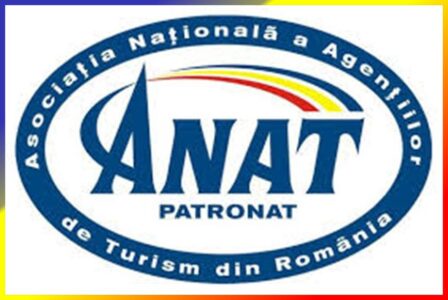 This recognition has been known to visitors for years and they were surprised by the passive attitude of the Romanian government.
This recognition has been known to visitors for years and they were surprised by the passive attitude of the Romanian government.
According to the source cited, no government understands that tourism can bring a lot of money to the budget. Therefore, tourism is seen by the government as superficial and unimportant.
“Tourism is an important economic branch and an international business card. But is change is coming as the National Association of Travel Agencies (ANAT) requests the new government of Romania for the 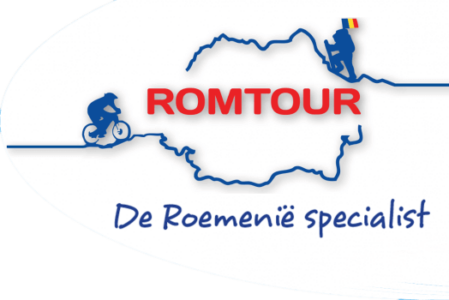 creation of a National Tourism Authority (ANT), with legal personality, directly subordinated to the prime minister and headed by a president with the rank of minister. This president actively participates in government meetings and is the main authorizing officer for appropriations. By the way, it appears that this “news” has already been leaked, because last six months new hotel chains appear,even golf courses are built with apartments and bungalows. Not for the average vacationer but that will follow as well.The source of income may be a better prospect for the current budget deficit.
creation of a National Tourism Authority (ANT), with legal personality, directly subordinated to the prime minister and headed by a president with the rank of minister. This president actively participates in government meetings and is the main authorizing officer for appropriations. By the way, it appears that this “news” has already been leaked, because last six months new hotel chains appear,even golf courses are built with apartments and bungalows. Not for the average vacationer but that will follow as well.The source of income may be a better prospect for the current budget deficit.
To the vacationer we would like to say “Come as a tourist, leave us as a friend” to have a look at the website of Romtour to see the already existing varied offer(www.romtour.nl) which is the only on Romania specialized travel agency and travel organization and to increase the pre-fun we advise you to buy the National Geographic travel guide about Romania.
For further information click here
Swine Fever
Romania is still on the European stage when it comes to swine fever. Last year we had the most new outbreaks.
According to a report by the European Food Safety Authority (EFSA), Romania was responsible for 66% of the 333 outbreaks of African swine fever in the EU last year. Meanwhile, another 13 member states have been affected by the virus, while Sweden is again virus-free. In addition, after Italy, Romania is the worst affected country in the EU in terms of animals killed by the virus.
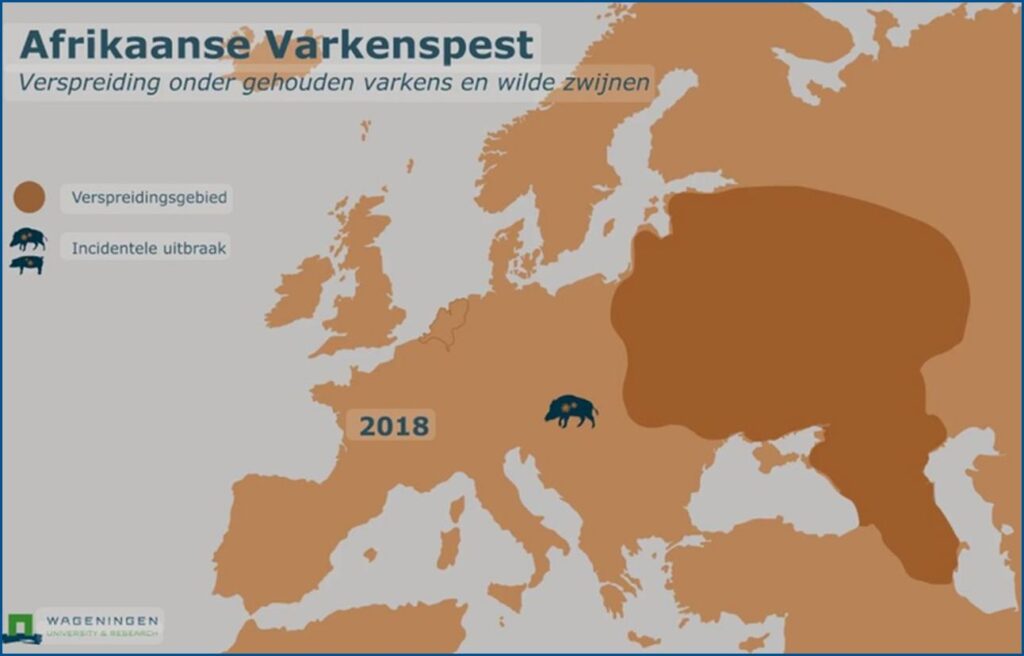
Outbreaks of African swine fever in domestic pigs in the EU decreased 83% last year compared to 2023, from 1,929 to 333. This decrease is mainly due to the decline in Croatia and Romania, where the decrease was 70%. Nevertheless, our country remained the state with the most reported outbreaks in 2024, according to an EFSA report. Moreover, we are the second most affected country in the EU. As a result of swine fever, Romania lost 3.8% of the livestock in the affected NUTS 3 regions (counties) in 2024, 77,062 animals respectively, while since the appearance of the virus in Romania in 2017, the total number of affected pigs was 1.7 million.
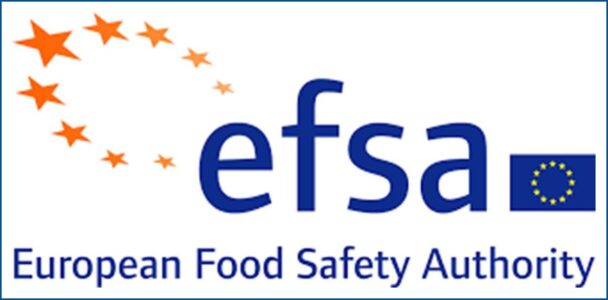
According to the National Institute of Statistics (INS), Romania had 3.2 million pigs last year.
Looking at the data for 2024, only Italy was most affected, where the number of pigs lost due to African swine fever was 15.7%. In the affected member states that provided data on pig populations, the overall percentage of domestic pigs dying from ASF in the affected NUTS 3 regions was 0.93%. This rate ranged from 0.01% in Lithuania to 3.8% in Romania and 15.7% in Italy.
Compared to 2023, losses increased in Italy, Latvia and Poland, while decreases were observed in Greece, Lithuania and Romania. It is important to note that these estimates do not include losses due to preventive culling or trade restrictions.
In terms of new outbreaks, Romania reported 220 out of 333 (66%) outbreaks in the EU last year, of which 186 were in wild boars. A year ago, there were 736 outbreaks of African swine fever in Romania. Most outbreaks (78%) occurred in farms with fewer than 100 pigs. However, an increase in the number of outbreaks in farms with more than 100 pigs was observed in Italy and Poland. In addition, six outbreaks were reported in farms with more than 10,000 pigs (Romania: 3; Italy: 2; Poland: 1).
As in previous years, a clear seasonality of ASF in domestic pigs was observed, with 51% of outbreaks in the EU reported between July and September.
“In 2024, affected member states continued the trend of relying more on passive surveillance than active surveillance for domestic pigs. Most outbreaks in domestic pigs were detected by passive surveillance based on testing of clinically suspect pigs (79.4%). In contrast, only 6.4% of outbreaks were detected by active surveillance, by contact investigation after the outbreak was detected, and by enhanced passive surveillance, where dead pigs are systematically tested (14.2%),” EFSA researchers said.
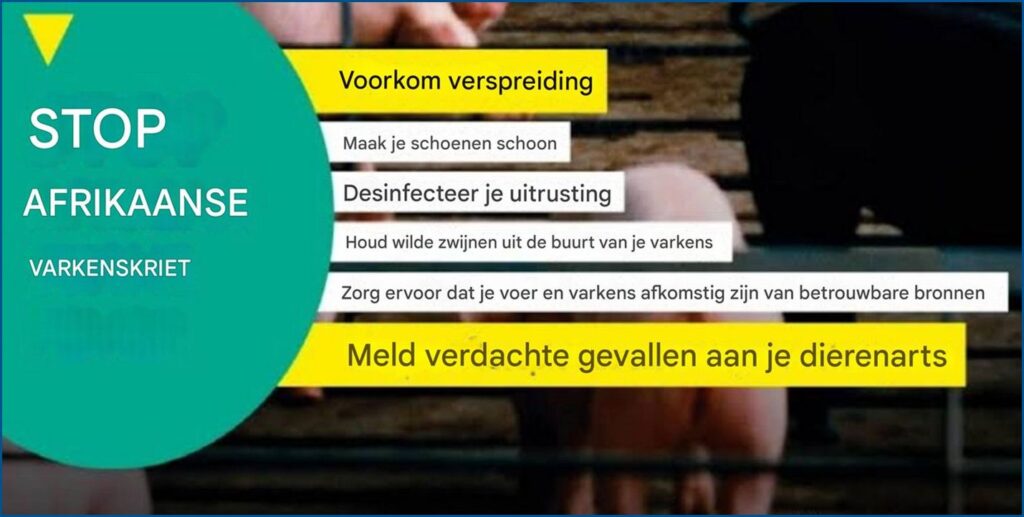
The number of African swine fever outbreaks in feral pigs in 2024 decreased by 2.2% in the EU compared to 2023 (7,677 versus 7,853 outbreaks). Poland reported the highest number of African swine fever outbreaks in the EU (2,311 outbreaks, representing 30%), followed by Italy (1,205) and Germany (966). Compared to 2023, an increase in the number of reported outbreaks was observed in Bulgaria, Croatia, Germany, Greece, Hungary, Italy, Latvia and Lithuania. In contrast, the number of reported outbreaks decreased in the Czech Republic, Estonia, Poland, Romania, Slovakia and Sweden.
In Romania, the last outbreak of African swine fever was recorded on May 15, 2025, affecting 43 animals. According to World Organization for Animal Health data, 256 new outbreaks occurred in Romania in 2025, killing 100,000 animals.
The cost of the digital excerpt from the land register has been abolished
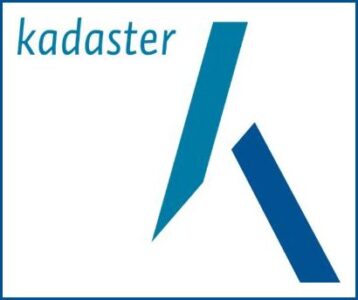 Since April 7, nearly 80,000 first registrations, requests for cadastral and land registry extracts have been issued free of charge in Romania. This public service is free for owners who request these documents in person, said Interim Development Minister Cseke Attila.
Since April 7, nearly 80,000 first registrations, requests for cadastral and land registry extracts have been issued free of charge in Romania. This public service is free for owners who request these documents in person, said Interim Development Minister Cseke Attila.
Special Messages
Foreign participations
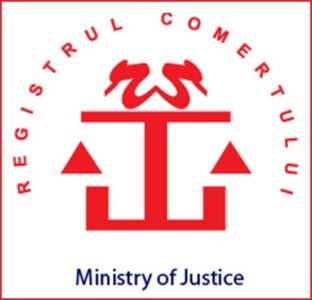 The largest number of companies with foreign holdings was held by investors from Italy, 54,105 respectively (issued capital of $3.677 billion), but the largest value of equity belongs to Dutch companies, $13.174 billion respectively, in 6,256 companies.
The largest number of companies with foreign holdings was held by investors from Italy, 54,105 respectively (issued capital of $3.677 billion), but the largest value of equity belongs to Dutch companies, $13.174 billion respectively, in 6,256 companies.
Hundreds of thousands of Romanians received free land from City Hall!
Cadastral work has begun in thousands of municipalities in Romania.
Almost seven million hectares have been cadastralized at no cost to citizens, thanks to projects financed mainly with European funds. The ANCPI is also active in more than 2,700 territorial administrative units.
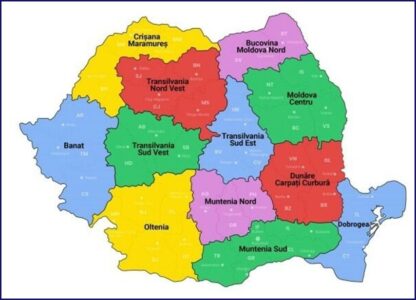 Cadastral work has begun in thousands of municipalities in Romania.
Cadastral work has begun in thousands of municipalities in Romania.
“The National Agency for Cadastre and Property Registration (ANCPI) carries out work to register property in the Integrated Cadastre and Land Registry System in 2,774 UATs, covering more than 5.6 million hectares. Funding is provided from the ANCPI’s own revenues, through the National Cadastre and Land Registry Program (PNCCF), from non-refundable European funds and from the budgets of town halls. The cadastres will be provided free of charge to citizens,” the Ministry of Development announced Friday in a press release.
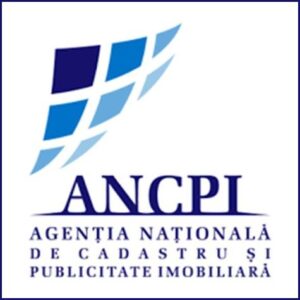 According to the cited document, ANCPI , a public institution subordinate to the Ministry of Development, Public Works and Administration, has completed the systematic registration of property throughout the municipality, in 327 UATs and in 32,478 cadastral sectors, covering an area of nearly seven million hectares.
According to the cited document, ANCPI , a public institution subordinate to the Ministry of Development, Public Works and Administration, has completed the systematic registration of property throughout the municipality, in 327 UATs and in 32,478 cadastral sectors, covering an area of nearly seven million hectares.
“Of these, 199 municipalities benefited from European funding through the Regional Operational Program 2014-2020 (POR) and the Program for Smart Growth, Digitalization and Financial Instruments 2021-2027 (PoCIDIF). To date, 2.3 million cadastre files have been opened with European funds. In total, ANCPI has opened more than 8.6 million new cadastre files through the implemented programs, which are free to citizens,” the source cited also reported.
According to the ministry, of the total 9.54 million hectares of agricultural land receiving subsidies from the Agency for Payments and Interventions for Agriculture (APIA), 8.37 million hectares (88%) have been registered in the integrated cadastre and land registry system. Systematic registration activities are currently underway in 2,774 municipalities. Activities are carried out in 478 municipalities at the level of the entire ATU, 444 of which receive European funds.
Post Craiova

More than code; our investment in people and environment
When I look back on everything we’ve built with NetRom, I realize again and again: it’s the people who make the difference. At NetRom we build software, but ultimately we are building something much bigger: trust, relationships and a positive impact on people and the environment. This is reflected not only in how we work with our customers – in co-creation, with attention and openness – but also in what we do outside the field.
Sponsorship is a subject we have never discussed in this place. Not because it is not important – quite the contrary. And fair is fair: we don’t have a well-defined academic strategy or deeply developed policy paper in this area. What we do have is some kind of measuring stick. A set of criteria by which we measure all our initiatives.
The main destination of our sponsorship contributions is undoubtedly the two local universities in Craiova. We maintain very close ties with these institutions – logical too, because they are the breeding ground for the talents working at NetRom. Not only now, but also in the future. We gratefully take advantage of a tax regulation in Romania that allows companies to donate part of their profits to charities.
But it doesn’t stop at education. Adriaan Kom (with his colleagues) of our client Visma Onguard, for example, is one such person who makes an impression. On June 5, he will climb the Alpe d’HuZes six times to raise money for cancer research. Such achievements – and the passion behind them – deserve our support.
Recently we also entered into a partnership with Iozefina Werle, chess master and volunteer pur sang. Through her, we are sponsoring the Dutch youth rapid chess championship in Woerden. Apart from the fact that chess is a great hobby of mine, I think it is a metaphor for how we work at NetRom: thoughtful, strategic, with attention to the bigger picture.
Of a completely different order is our sponsorship of Richard Verschoor, Formula 2 driver. F2 is the gateway to Formula 1, and Richard is an exceptionally talented, driven and likeable athlete. His dedication is inspiring, and when we invite him to NetRom events, the enthusiasm from clients and associates is great. Our partners should first and foremost have equal values, but it also serves our commercial and advertising interests – we are honest about that.
But our sponsorship is not about visibility alone. It’s about who we want to be as an organization: integrity, commitment, forward-thinking. At NetRom, we put people first – because we believe that’s the only path to lasting impact and true quality. Whether on the race track, behind a chess board, or on the flanks of a French mountain: when people can bring out the best in themselves, something special happens.
That’s what we at NetRom want to contribute to. Every day. In code, in collaboration, and in our social choices.
Disclaimer
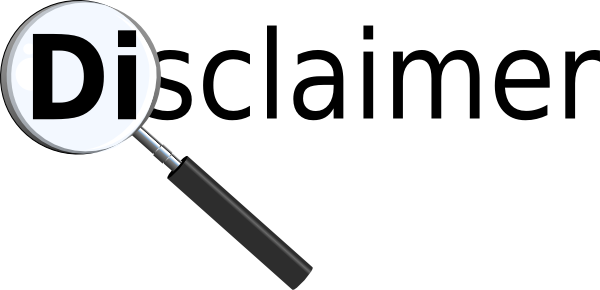
The newsletter of the Dutch Romanian Network is compiled with great care. The Dutch Romanian Network cannot accept any liability for a possible inaccuracy and/or incompleteness of the information provided herein, nor can any rights be derived from the content of the newsletter. The articles do not necessarily reflect the opinion of the board.
